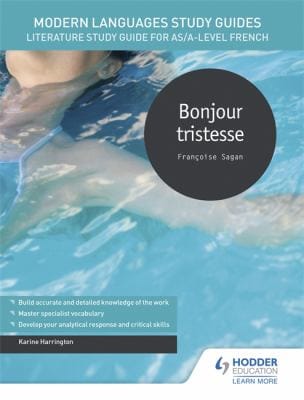Bonjour Tristesse: A Fresh Look at Françoise Sagan's Classic
An in-depth look at Françoise Sagan's classic novel, its plot, themes, characters, style and lasting influence.

Introduction
Published in 1954 when Françoise Sagan was only eighteen, "Bonjour Tristesse" shocked critics with its cool portrayal of adolescent desire and moral drift on the French Riviera. Slim and deceptively simple, the novel sold millions, landed on the Vatican’s blacklist and turned its author into an emblem of youthful rebellion. More than six decades later, it continues to captivate readers with its crystalline prose and unsettling insight. This guide revisits the story, themes, style, legacy and reasons the book still matters.
Plot Summary
Set over a languid summer on the Côte d'Azur, the story is narrated by seventeen-year-old Cécile, who is holidaying with her widowed father, Raymond, a charming libertine more interested in pleasure than responsibility. Their carefree routine of beaches, parties and casual flirtations is disrupted when Anne Larsen, an elegant, principled family friend, arrives and soon becomes romantically involved with Raymond. Alarmed by the prospect of a conventional marriage that threatens her permissive existence, Cécile conspires with her father's current mistress, the ingenuous Elsa, and her own love interest, Cyril, to sabotage the engagement—an intrigue that spirals toward irreversible tragedy.
Key Themes
Behind the sunlit setting lies a lattice of concerns that reverberate far beyond the Riviera. Chief among them is the clash between adolescent hedonism and adult responsibility: Cécile equates freedom with impulse, while Anne represents order and conscience. Sagan also exposes the hollowness of easy pleasure—desire turns to boredom with alarming speed, leaving characters adrift in existential emptiness. Guilt permeates the narrative, anticipated by the title’s greeting to sadness, and feminist questions surface as Cécile and Anne test the limited agency allowed by a patriarchal world.
Character Study
Cécile remains one of twentieth-century literature's most provocative narrators. Intelligent, capricious and self-aware, she addresses the reader in a tone that swings between bravado and vulnerability. Raymond foreshadows the aging playboy archetype: charming yet emotionally stunted. Anne provides the moral counterpoint—cultured, successful, yet fatally drawn into Raymond's orbit. Elsa, initially dismissed as shallow, becomes a pawn in Cécile's scheme and exposes the human cost of their games. Even supporting figures like Cyril, whose romantic idealism contrasts with Cécile's pragmatism, showcase Sagan's knack for complex portraits rendered in economical strokes.
Narrative Style and Voice
Sagan writes with pared-down elegance: short sentences, spare description and dialogue laced with ironic understatement. The first-person voice traps us inside Cécile’s shifting self-justifications, making her both uncomfortably intimate and unreliable. Heat-soaked sensory details slow the pace, capturing the languor that liberates and corrupts the characters. The result feels simultaneously light and lethal, a surface shimmer masking moral depth.
Cultural Impact
Upon release, "Bonjour Tristesse" sold half a million copies in a year and provoked heated debate. Conservatives scolded its sexual frankness, while existentialists praised its authenticity. The Vatican placed it on the Index of Forbidden Books, a ban that only boosted sales. Sagan became an instant icon, her cool detachment and fast cars foreshadowing the rebel chic of the 1960s. Designers and New Wave filmmakers borrowed the novel’s sleek nihilism, embedding its imagery of idle youth, beach villas and gauloises smoke deep in popular culture.
Adaptations
Otto Preminger’s 1958 film version, starring Jean Seberg and Deborah Kerr, moved the story to widescreen Technicolor yet kept its moral ambiguity. Reviews were mixed, but the movie spread Sagan’s Riviera aesthetic worldwide. A 1995 French TV adaptation offered a text-faithful reading, and countless music videos, fashion shoots and perfume ads still echo its tableaux of convertibles, white sails and languid cigarette haze.
Why Read It Today?
Today, Sagan’s portrait of emotional detachment feels strikingly modern amid dating apps and social-media performance. The novella’s brevity invites quick reading, yet its aftertaste lingers. Students of literature can study its unreliable narration; Francophiles can savor a snapshot of post-war France where prosperity mingled with ennui. Above all, the book reminds us that fleeting desires often shape lives in irreversible ways.
Conclusion
More than a period piece, "Bonjour Tristesse" endures because it distills universal questions about freedom, responsibility and the seductive pull of indolence. Sagan's razor-sharp observations, delivered with youthful audacity, ensure that the novel continues to resonate, unsettling readers with the realization that sadness often lies in wait beneath the glitter of our most carefree summers.



